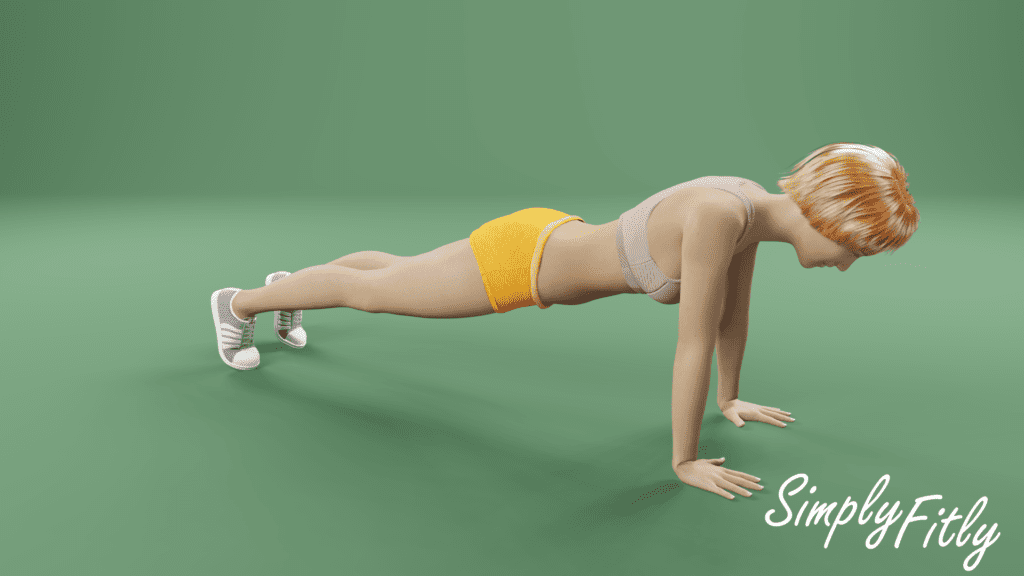
Muscle group: upper body (chest, shoulders), core, lower body (lower back, hips).
Intensity: moderate.
Directions
- Start in a push-up position, with your hands placed directly under your shoulders and feet hip-width apart.
- Engage core muscles and glutes, and hold your body in a straight line from your head to your heels.
- Make sure your head is in line with your spine and your gaze is toward the floor.
- Hold the position for 30-60 seconds, or as long as you can maintain proper form.
Modifications: start with holding the position for 15-30 seconds. By exercising regularly you will improve your endurance and will be able to hold the plank longer. Other method is suitable if in a workout you need to hold the plank longer than you are currently capable. Then start with a plank and move to a plank on knees or a forearm plank. Just remember to maintain a straight line with your body.
Mistakes
- Letting the hips drop: This can strain the lower back and take the focus off the core muscles.
- Raising the hips too high: This can put unnecessary pressure on the shoulders and make it more difficult to engage the core.
- Letting the head drop: This can strain the neck and disrupt the alignment of the spine.
- Rounding Back: Letting your upper back round and shoulders hunch can decrease the effectiveness of the exercise and strain your neck.
- Improper Wrist Placement: Placing your wrists too far forward or backward can affect stability and strain joints.
- Locking Elbows: Fully extending your elbows can hyperextend the joint and compromise joint integrity.
- Excessive Shoulder Shrugging: Allowing your shoulders to rise up toward your ears can tense your upper body unnecessarily.
Conclusion
The Plank exercise is a foundational movement known for its remarkable benefits in building core strength, stability, and posture. By engaging various muscle groups, including the core, shoulders, and back, planks offer both a versatile workout option and a valuable addition to circuit training routines.
Plank focuses on activating core muscles, contributing to improved spinal support and posture. This core engagement extends to the muscles of the upper body, promoting upper body strength and stability.
Accessible to all fitness levels, Plank can be performed without equipment, making it a convenient choice for enhancing overall core strength and functional stability in everyday activities.
In circuit training, Plank serves as an isometric exercise that complements both strength and cardiovascular components. Incorporating Plank into a circuit routine challenges the core and upper body while providing active recovery for other muscle groups. This combination of strength, stability, and cardiovascular engagement adds a dynamic dimension to a comprehensive workout.